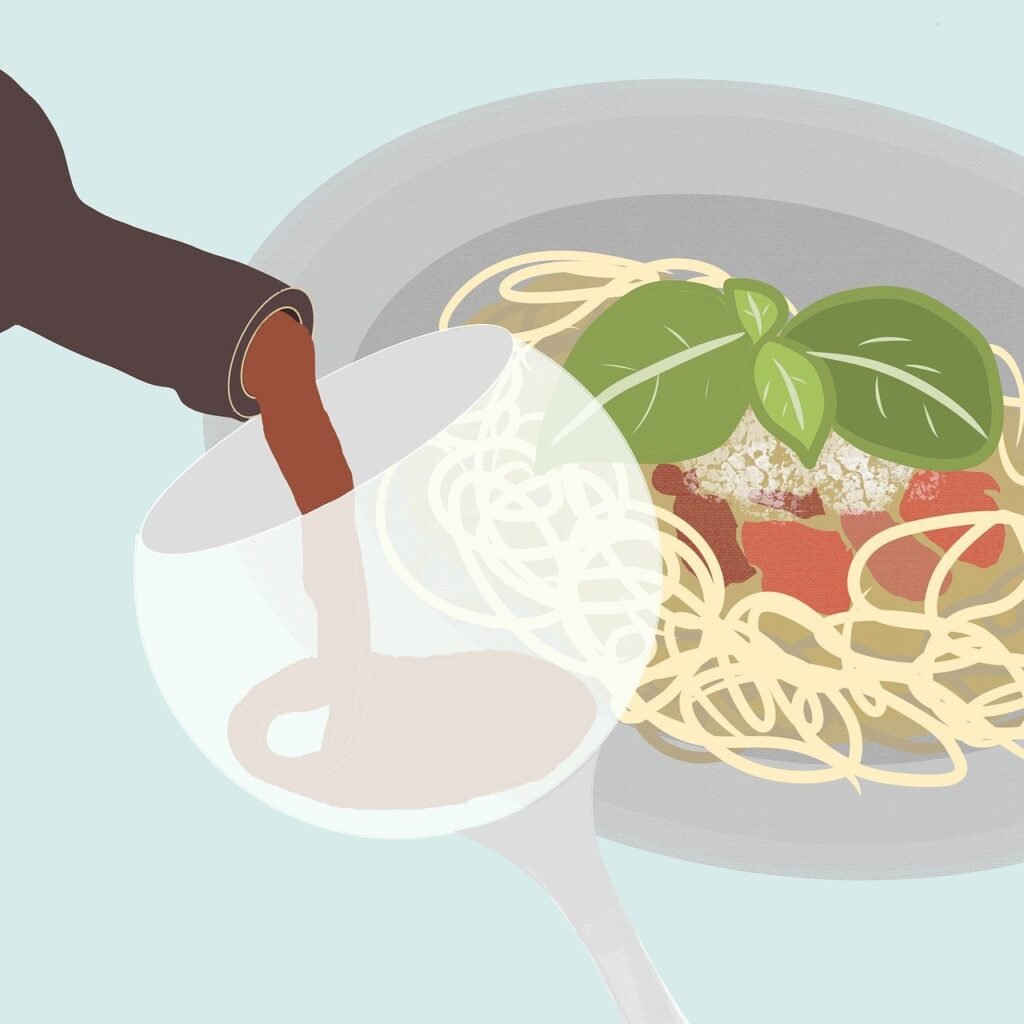This Article has been revised, edited and added to, by Poulomi Chakraborty.
- The Importance of a Unique Brand Story
- Harnessing the Power of Visual Identity in Tequila Branding
- Engaging Customers with Experiential Marketing
- Innovating with Product Line Expansion
- Mastering the Art of Packaging
- The Role of Packaging in Premium Branding
- Enhancing the Unboxing Experience
- Emphasizing Brand Identity Through Design Elements
- Creating an Interactive Packaging Experience
- Leveraging Customization for Premium Appeal
- Ensuring Consistency Across All Brand Touchpoints
- Strategic Use of Packaging for Market Expansion
- Building Brand Loyalty through Community Engagement
- Conclusion
In the world of spirits, tequila holds a unique allure. Known for its bold flavors and rich cultural heritage, tequila brands face the challenge of standing out in a rapidly growing market. Crafting a memorable brand in this competitive landscape is not just about having a quality product; it’s about creating a story that resonates with consumers. This article explores the art of tequila branding, offering insights and actionable strategies to help brands weave captivating narratives that capture hearts and minds.
The Importance of a Unique Brand Story

The Emotional Connection
At its core, branding is about building an emotional connection with your audience. For tequila brands, this means transcending the traditional marketing techniques and delving into the deeper, more personal aspects of their heritage and craftsmanship. A compelling brand story should not only inform but also evoke feelings that align with the brand’s values and vision.
Crafting Your Story
Consider the story of a small distillery in Jalisco, Mexico, where the agave plants are not just farmed but cared for with a devotion that spans generations. Here, the making of tequila is not merely a process but a ceremonial tradition, infused with the spirits of the land and the people. By sharing these detailed narratives, a brand can create a vivid image in the consumer’s mind, one that links every sip of tequila to the sun-drenched fields of Jalisco and the passionate individuals who nurture them.
Emotional Resonance Through Brand Elements
The elements of your brand—name, logo, label design, and packaging—play crucial roles in storytelling. They are the first touchpoints, the visual and textual cues that introduce consumers to your narrative. For instance, a tequila brand might use a label that features traditional Mexican art, or perhaps a symbol that has historical significance in the region, like the Aztec agave god. These elements, when thoughtfully designed, act as silent storytellers that reinforce the emotional impact of the brand story.
Differentiating Through Heritage
Heritage is a powerful tool in the tequila industry. Brands that leverage their historical roots are able to offer something genuinely unique in the market. This differentiation is crucial, particularly in a sector where many products may seem similar at first glance.
The Power of Authenticity
Authenticity resonates deeply with today’s consumers, especially in the premium spirits market. A brand that can demonstrate its adherence to traditional distillation methods, or its commitment to local sourcing, has a strong narrative foundation that distinguishes it from competitors. For example, a tequila brand that still uses the ancient tahona wheel to crush agave might highlight this traditional technique in its branding to emphasize the authenticity and painstaking care that goes into producing each bottle.
Leveraging Local Culture
Integrating local culture into your brand narrative can significantly enhance its appeal. This can be particularly effective for tequila brands, given the rich cultural tapestry of Mexico. Elements like local festivals, indigenous crafts, and regional music can be woven into the brand story, creating a richer, more engaging narrative.
By focusing on these unique aspects of heritage and culture, tequila brands can craft a story that not only stands out but also fosters a deeper connection with their audience. This emotional resonance is what ultimately builds brand loyalty and advocacy among consumers.
Harnessing the Power of Visual Identity in Tequila Branding

Visual Impact on Consumer Perception
The visual identity of a tequila brand plays a critical role in its market success. From the bottle design to the label art and typography, every visual element contributes to the overall perception of the brand. These elements do more than just attract attention; they communicate the brand’s personality and values at a glance.
Crafting a Distinctive Bottle Design
Bottle design is particularly important in the spirits industry, where the shape, color, and material of the bottle can significantly influence purchasing decisions. A unique bottle can serve as a centerpiece on a shelf, immediately drawing the eye and setting the brand apart from its competitors. For example, a tequila brand might choose a hand-blown glass bottle with blue accents that evoke the blue agave plant, directly tying the product’s appearance to its origin.
The Role of Label Art and Typography
The label is often the first detailed interaction consumers have with a brand. An effective label design combines art and typography to tell the brand’s story succinctly and compellingly. For tequila brands, this might mean incorporating elements of Mexican heritage, such as folk art or calligraphy-style fonts that reflect traditional Mexican handwriting. These choices help reinforce the authenticity and cultural roots of the brand.
Color Psychology in Branding
Color is a powerful tool in visual branding, capable of influencing mood and perceptions. For tequila brands, choosing the right colors can enhance the story the brand wishes to tell. Warm tones like amber and terra cotta can evoke feelings of warmth and comfort, reminiscent of a sunset in the Mexican countryside, while vibrant greens and blues might highlight the freshness of the agave.
Creating a Cohesive Visual Narrative
A cohesive visual narrative ensures that all visual elements of the brand align with its overall story and marketing goals. This consistency is key to building a strong brand identity that consumers recognize and remember. For instance, if a brand’s story centers on artisanal craftsmanship, its visual elements should reflect this with handmade or traditional designs and natural color palettes.
Engaging Customers with Experiential Marketing
The Power of Experience
In today’s market, where consumers are bombarded with countless choices, experiential marketing can be a game-changer for tequila brands. By creating memorable experiences, brands can engage consumers on a deeper level, making the brand more memorable and enhancing customer loyalty.
Hosting Tequila Tastings and Tours
One effective approach is to host tequila tastings and tours, either at the distillery or through events in key markets. These experiences allow consumers to see, touch, and taste the tequila in an environment that fully immerses them in the brand’s world. Such events can also provide the perfect backdrop for telling the brand’s story, from the harvesting of the agave to the final distillation process.
Leveraging Technology for Virtual Experiences
For brands that cannot easily host physical events, virtual reality (VR) and augmented reality (AR) offer compelling alternatives. These technologies can transport consumers to the agave fields of Jalisco or inside the distillery, providing a unique educational experience that strengthens the emotional bond with the brand.
Elevating Brand Experience with Signature Events
For startup founders looking to make a significant impact in the tequila market, hosting signature events can be a game-changer. These events should go beyond standard tastings, offering unique experiences that are memorable and shareable.
For instance, founders might consider hosting annual festivals that celebrate the cultural roots of tequila, complete with music, traditional dance, and artisanal food pairings. Such events create a festive atmosphere that encourages deeper engagement with the brand and its story.
Implementing Pop-Up Experiences
Pop-up experiences offer a flexible and dynamic way to reach new audiences and test different markets without a significant long-term investment. These can range from pop-up bars in high-traffic urban areas to temporary installations at major events like music festivals or cultural expos.
By designing these pop-ups with a focus on immersive brand storytelling—perhaps recreating a miniature version of a distillery or a themed environment that reflects the spirit of Jalisco—brands can create a buzz, generate media coverage, and engage directly with consumers in a memorable setting.
Leveraging Technology for Enhanced Interactions
In an era where digital technology shapes consumer experiences, tequila startups have the opportunity to innovate through augmented reality (AR) and virtual reality (VR). These technologies can be used to create interactive experiences that tell the brand’s story in compelling ways.
For example, an AR app could allow users to scan a bottle label to watch a short film about the tequila’s origins and production methods. Alternatively, VR can transport users to the agave fields of Mexico, offering a virtual tour that explains the process from plant to product.
Fostering Community Through Exclusive Memberships
Building a community around a brand can significantly enhance customer loyalty. Startups might consider developing a membership program that offers exclusive benefits like early access to new products, members-only events, and special editions of the tequila.
Such programs not only incentivize repeat purchases but also help create a community of brand advocates who feel valued and connected to the brand’s success.
Strategic Collaborations for Event Sponsorship
Collaborating with other brands or events that align with the tequila brand’s target demographic can amplify reach and reinforce brand messaging. Strategic partnerships with culinary events, art galleries, and fashion shows can place the brand in contexts that enhance its prestige and appeal. Sponsorship deals should be chosen to ensure that they reflect the brand’s values and aesthetics, creating a coherent and unified brand image.
By employing these strategies, tequila startups can effectively use experiential marketing to captivate and grow their audience, turning casual buyers into passionate brand advocates and laying a strong foundation for long-term success.
Innovating with Product Line Expansion

Diversifying the Product Range
Expanding the product line can provide new opportunities for tequila brands to capture different segments of the market. This could include introducing different aging profiles like blanco, reposado, and añejo, or even venturing into flavored or infused tequilas, which can appeal to a broader audience.
Targeting Different Consumer Preferences
By offering a variety of tequila types, brands can cater to the diverse preferences of their consumers. For instance, a blanco tequila might appeal to purists who appreciate its clear, crisp flavors, while an añejo, with its complex, aged characteristics, might attract those who typically enjoy aged spirits like whiskey. Flavored tequilas, such as those infused with lime or jalapeño, can attract younger drinkers or those new to tequila who are looking for more approachable, mixable options.
Limited Edition Releases
Limited edition releases can create excitement and urgency around a brand. These can be timed around special events or anniversaries and often feature unique, collectible packaging or rare blends. Not only do they attract collectors and enthusiasts, but they also generate media buzz and can significantly enhance brand prestige.
Exploring Niche Markets with Craft and Artisanal Variants
Tequila startups have a unique opportunity to differentiate themselves by tapping into the craft and artisanal spirits trend. By introducing small-batch editions or special craft variants that highlight unusual or traditional production techniques, startups can capture the attention of connoisseurs and enthusiasts.
This approach not only reinforces the brand’s commitment to quality and authenticity but also positions it as an innovator. For example, producing a tequila using only traditional methods like the tahona stone to crush the agave, or aging tequila in unique barrels such as wine or sherry casks, can create distinctive flavor profiles that appeal to a sophisticated palate.
Seasonal and Experimental Flavors
To keep the product lineup fresh and exciting, tequila startups can consider developing seasonal offerings that incorporate local, seasonal ingredients. This could include limited-time flavors that align with specific holidays or seasons, such as a pomegranate-flavored tequila for the winter holidays or a floral-infused variant for spring.
Such initiatives can generate buzz and provide a reason for customers to engage with the brand repeatedly throughout the year.
Integrating Cross-Industry Insights for Innovation
Looking beyond the spirits industry for inspiration can lead to groundbreaking product innovations. For instance, collaborations with the culinary world to develop food-inspired tequilas, such as those infused with herbs or spices, can attract food enthusiasts and culinary experts.
Additionally, insights from the fragrance industry could inspire the creation of tequilas with layered aromatic profiles, appealing to a sensory-focused audience.
Capitalizing on Health Trends
With a growing consumer interest in health and wellness, tequila startups might explore developing lower-calorie or additive-free options to appeal to health-conscious consumers.
Promoting tequila’s natural aspects, such as being gluten-free and low in sugar, can also attract a segment of the market looking for cleaner, healthier alcoholic beverages. Marketing these aspects alongside traditional enjoyment can broaden the brand’s appeal.
Utilizing Feedback for Product Refinement
Engaging directly with consumers to gather feedback on product trials can provide invaluable insights that guide future product development. Startups can use social media platforms, pop-up tasting events, or even direct customer surveys to collect opinions and preferences. This not only helps in refining existing products but also in identifying potential areas for new offerings.
By strategically expanding their product lines through these innovative approaches, tequila startups can build a diverse and appealing portfolio that not only attracts a broad range of consumers but also establishes the brand as a forward-thinking leader in the tequila market.

Related: Check out our free SEO suite

Mastering the Art of Packaging
The Role of Packaging in Premium Branding
In the premium spirits market, packaging can dramatically influence consumer perception. High-quality, innovative packaging can suggest a higher level of craftsmanship and luxury, justifying a higher price point.
Designing Premium Packaging
For tequila brands, this might involve elements like heavy glass bottles, cork or wooden stoppers, and embossed labels. Some brands may choose to include handcrafted elements, such as leather wraps or custom artwork, to emphasize luxury and attention to detail.
Enhancing the Unboxing Experience

The unboxing experience can also play a significant role in branding. Packaging that creates a memorable, tactile experience can leave a lasting impression, making the act of opening the product as memorable as consuming it. This might include elements like custom-designed boxes, themed inserts, or even small gifts such as branded shot glasses.
Emphasizing Brand Identity Through Design Elements
For tequila startups, the packaging is not merely a container but a crucial element of brand identity. It’s essential to ensure that every aspect of the packaging—from the shape of the bottle to the materials used—reflects the brand’s ethos and message.
For instance, a startup focusing on sustainable practices might opt for recycled or eco-friendly materials, sending a clear message to consumers about the brand’s commitment to the environment. This can be a compelling selling point, particularly for environmentally conscious consumers.
Creating an Interactive Packaging Experience
In today’s digital age, integrating technology into packaging can create a unique consumer interaction that differentiates a brand from its competitors. Techniques such as augmented reality can turn a tequila bottle into an interactive storytelling tool.
By scanning a QR code or using a specific app, consumers can unlock immersive content like virtual tours of the distillery, introductions to the master distillers, or even augmented reality experiences that illustrate the tequila-making process. This not only enhances the consumer’s understanding and appreciation of the product but also increases the likelihood of social sharing.
Leveraging Customization for Premium Appeal
Offering customization options can significantly enhance the premium appeal of a tequila brand. This could involve personalized labels, where customers can have names, messages, or special dates printed on the label, making it an ideal choice for gifts or special occasions.
Another approach could be offering bespoke bottle designs for high-end clients, which could include handcrafted elements or unique, artistically inspired bottles that become keepsakes.
Ensuring Consistency Across All Brand Touchpoints
Consistency in packaging design across different products and touchpoints ensures that the brand is instantly recognizable, building a strong and cohesive brand image. This involves a uniform color scheme, typography, and imagery that aligns with the brand’s core message and values across all packaging options, promotional materials, and digital platforms. For example, a consistent motif or emblem that appears on every bottle, box, or promotional item can reinforce brand identity and aid in brand recall.
Strategic Use of Packaging for Market Expansion
As tequila brands consider expanding into new markets or demographics, packaging can play a strategic role. Understanding cultural nuances and consumer preferences in different regions can guide the adaptation of packaging designs to suit local tastes and expectations.
This might mean altering color schemes, design elements, or even bottle shapes to better align with regional aesthetic preferences or consumption habits.
By mastering these aspects of packaging, tequila startups can not only enhance their brand’s appeal and recognition but also create deeper connections with their audience, encouraging loyalty and advocacy while distinguishing themselves in a crowded market.
Building Brand Loyalty through Community Engagement

Creating a Brand Community
Fostering a community around a tequila brand can lead to deepened customer loyalty. This might involve organizing exclusive tasting events for club members, creating online forums where enthusiasts can share cocktails and experiences, or offering loyalty programs with rewards and perks.
Utilizing Feedback Loops
Engaging with the community also provides valuable feedback. Brands can use this input to refine their products and services, ensuring that they continue to meet and exceed customer expectations. This kind of responsive interaction can significantly enhance brand trust and loyalty.
Educational Initiatives
Educating consumers about tequila can also help build a community. Workshops on tequila tasting, the distillation process, or the history of tequila can engage consumers and deepen their appreciation for the spirit. This educational approach can elevate the brand’s reputation as an authority in the field.
Cultivating a Brand Community with Authentic Interactions
For tequila startups, the creation of a genuine community around their brand is pivotal. This involves more than just occasional customer interactions; it requires a consistent effort to engage with followers in a meaningful way.
Hosting regular virtual meetups or Q&A sessions with the founders or master distillers can give fans an insider look at the brand’s processes and philosophies. These interactions should not be purely promotional but designed to foster a sense of belonging and loyalty by showing the human faces behind the brand.
Leveraging User-Generated Content to Amplify Connection
Encouraging and featuring user-generated content (UGC) is a powerful strategy to deepen community ties and enhance brand visibility. By inviting customers to share their own stories, photos, or videos featuring the tequila, brands can create a multi-dimensional dialogue between the consumer and the company.
Highlighting this content on the brand’s social media channels or in marketing campaigns not only rewards engaged customers but also shows potential customers the real-world enjoyment and approval of the product, adding an element of peer validation.
Establishing Local Brand Ambassadors
Developing a network of local brand ambassadors can be an effective way to build community and expand market reach. These ambassadors, ideally individuals who are genuinely enthusiastic about the brand, can host local events, participate in tastings, and share their love for the tequila within their personal and professional circles. This grassroots approach helps personalize the brand on a local level, making connections more meaningful and tailored to specific communities.
Creating Value with Exclusive Membership Benefits
Offering an exclusive membership program can provide a sense of exclusivity and value that goes beyond the occasional purchase. Benefits could include access to limited-edition products, invitations to members-only events, or even participation in decisions about future flavors or products. This not only makes members feel valued and integral to the brand’s journey but also encourages ongoing engagement and loyalty.
Engaging Through Educational Initiatives
Education is a crucial component of community engagement for tequila brands. Providing educational content about the nuances of tequila-making, the history of the spirit, and how to appreciate its complex flavors can transform casual drinkers into informed enthusiasts.
Workshops, either online or in person, and detailed guides and videos can help cultivate a knowledgeable community that feels more connected to the brand through their increased understanding and appreciation of tequila.
By implementing these strategies, tequila startups can create a vibrant community of loyal customers. This community not only supports the brand through purchases but also acts as a powerful advocate for the brand through word-of-mouth promotion, social sharing, and personal recommendations.
This type of engaged community is invaluable as it represents a sustainable asset that can drive long-term success for the brand.
Conclusion
Tequila branding transcends mere marketing tactics, encapsulating a rich narrative that connects deeply with its audience. Successful tequila brands harness the power of storytelling, showcasing their heritage and craftsmanship to create a bond that goes beyond the bottle. They leverage visual elements and innovative packaging to make a lasting first impression, while product diversification caters to varying consumer tastes and expands market reach.
By engaging customers through experiential marketing, digital platforms, and community initiatives, tequila brands not only build loyalty but also foster a passionate following. Ultimately, the art of tequila branding is about crafting an experience that is as authentic and memorable as the spirit itself. This approach not only ensures a strong market presence but also turns casual buyers into lifelong enthusiasts, who appreciate not just the flavor but the story behind every sip.
Read Next:
- How AI is Revolutionizing Biotech SEO
- Chatbots and SEO in the Biotech Industry
- The Future of Voice Search for Biotech Startups’ SEO Campaigns
- Using Social Platforms to Amplify Biotech Research
- Twitter’s Role in Disseminating Scientific SEO Content for Biotech Startups






















Comments are closed.